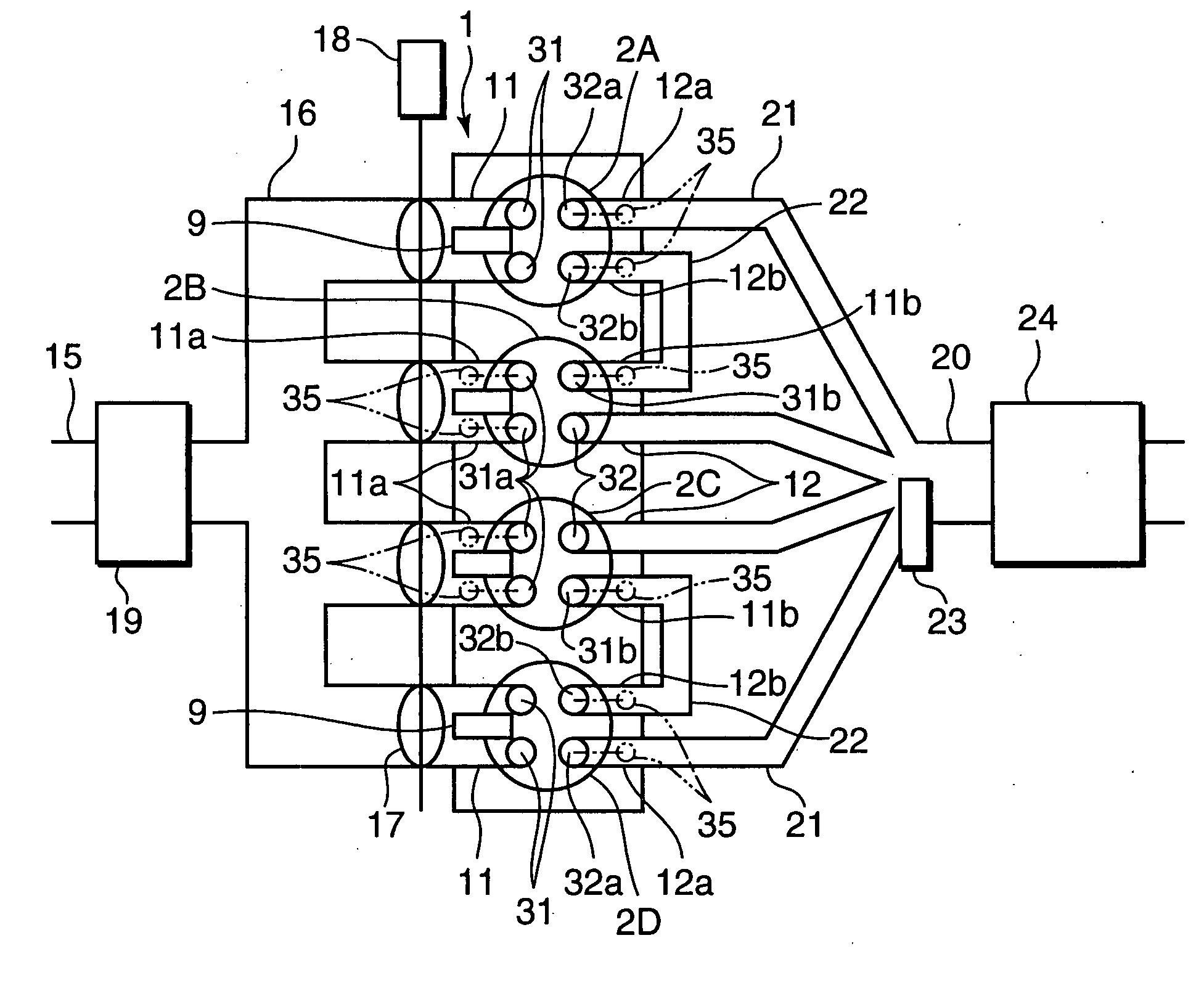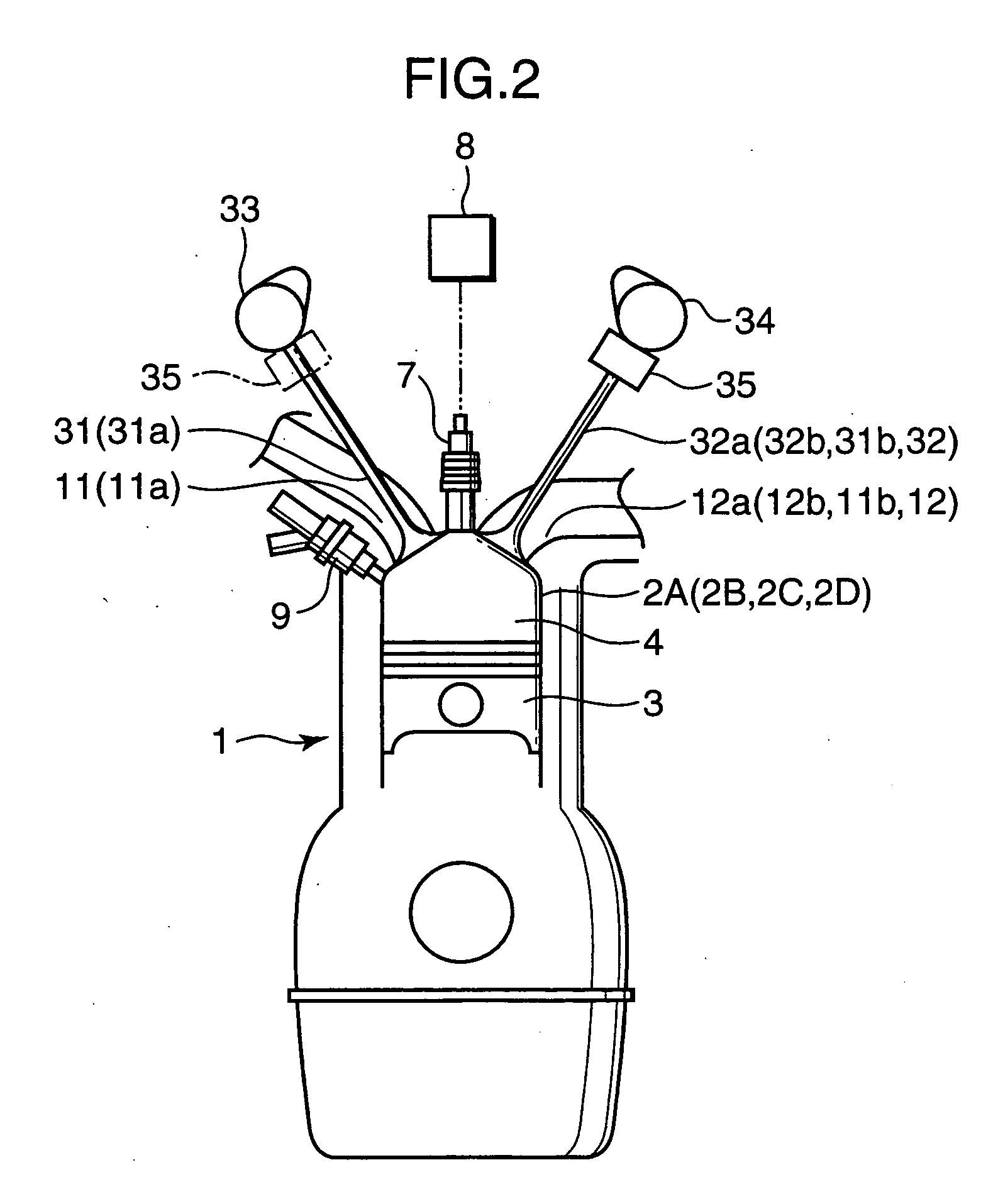Control device for spark-ignition engine
- Summary
- Abstract
- Description
- Claims
- Application Information
AI Technical Summary
Benefits of technology
Problems solved by technology
Method used
Image
Examples
Embodiment Construction
[0029]FIG. 1 is a diagram schematically showing the construction of a spark-ignition gasoline engine provided with a control device according to a preferred embodiment of the invention, and FIG. 2 is a diagram schematically showing the construction of one of cylinders of an engine body 1 together with such associated components as intake and exhaust valves provided in the cylinder.
[0030] Referring to these Figures, the engine body 1 has a plurality of cylinders. Specifically, the engine body 1 has four cylinders designated 2A, 2B, 2C and 2D in the illustrated embodiment. A piston 3 is fitted in each of these cylinders 2A-2D and a combustion chamber 4 is formed above the piston 3. There is installed a spark plug 7 at the top of the combustion chamber 4 in each cylinder 2 in such a way that a far end of the spark plug 7 is located inside the combustion chamber 4. The spark plug 7 is connected to an ignition circuit 8 which electronically controls ignition timing.
[0031] On one side o...
PUM
 Login to View More
Login to View More Abstract
Description
Claims
Application Information
 Login to View More
Login to View More - R&D
- Intellectual Property
- Life Sciences
- Materials
- Tech Scout
- Unparalleled Data Quality
- Higher Quality Content
- 60% Fewer Hallucinations
Browse by: Latest US Patents, China's latest patents, Technical Efficacy Thesaurus, Application Domain, Technology Topic, Popular Technical Reports.
© 2025 PatSnap. All rights reserved.Legal|Privacy policy|Modern Slavery Act Transparency Statement|Sitemap|About US| Contact US: help@patsnap.com



